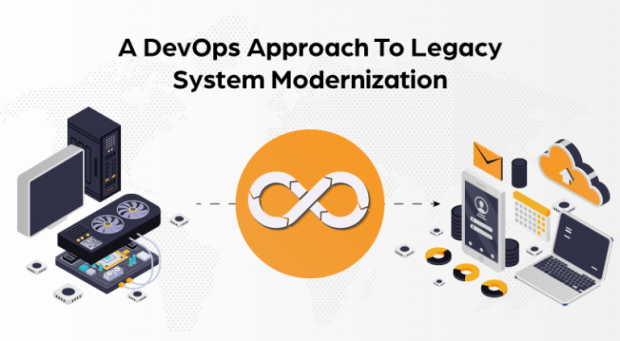Software modernization efforts that aim for a faster time-to-market, a more competitive customer experience, and quick answers to rapidly changing market needs and operational demands are attracting organizations more and more these days.
On the other hand, legacy modernization initiatives have their own set of obstacles, stumbling blocks, and peculiarities. With that in mind, I’ll discuss many modernization projects done by software development companies, lessons learned, benefits gained from legacy software transformation trips, and some general modernization success suggestions.

3 Success Stories and Practical Tips
1. Migrating accounting software to Azure for better maintenance and updates
A producer and distributor requested accounting and payroll software from a custom software development firm to upgrade their desktop software products, which legacy technologists had designed.
Migration Motivations
The reason for seeking the assistance of software development companies is because it has problems with software maintenance and updates. Because the corporation couldn’t support quick and easy custom product development (software and mobile app development) to satisfy new client needs, the product’s competitiveness was jeopardized.
The Outcome of the Migration
The custom software agency did a total transformation of a historical desktop custom software product into a web application that runs on Azure. This has allowed us to overcome the limitations of client-dependent desktop programs, reducing interruption and, as a result, expenditures and time spent on product evolution.
The new system allows for frequent and simple updates and integrations. E-payments, automated tax calculation, and an online subscription service have all been added to the capability.
The system also acts as a single site for information storage and sharing for product users, who can access and work with consistent data anytime, anywhere, and on any device because it is hosted in the cloud.
Migration Success Factors
- Taking inventory of present custom software development requirements (including all architectural design elements, connections, interdependencies)
Many outdated systems don’t have up-to-date and detailed requirements documentation. Clear and relevant application documentation, on the other hand, aids in shortening the learning curve for modernization team members, accurately identifying potentially reusable components for the renewed system, and predicting the impact of future software changes – allowing the migration to be completed faster and with fewer business process disruptions.
- Re-architecting to a stateless modular architecture
The ability to leverage horizontal cloud scaling capacity, maintain high availability, and add new functionality and integrations is made easier by breaking down a revived application into a group of independent modules. The stateless nature of the program (with a state only maintained in the browser) makes it even more scalable and portable, and it interfaces better with other cloud-based services. It also aids in the prevention of any infrastructure concerns that may affect the user experience (servers going down).
2.Migration of cashback services to Amazon Web Services (AWS): Towards higher availability
Several software development modules for a large US-based cashback services provider of online shopping, travel, and entertainment services and products in over 100 countries needed to be updated (a web portal, statistics, payments, commission, mailings, and others).
Modernization Motivations
The lack of scalability in the FortySeven IT infrastructure supporting the company’s operations was a problem. Server overloads and a severe drop in service performance resulting from the growing number of website visits. During overloads, fewer customers could complete their purchases, resulting in a considerable loss in revenue.
The Outcomes of Modernization
The whole infrastructure was transferred to AWS from 20 dedicated servers. The scalable, cloud-based solution can confidently tolerate huge loads. In addition, the organization no longer incurs the significant costs associated with running its services on dedicated servers.
Factors that Influence Migration Success
- The architecture is based on a shared-nothing model
It is feasible for custom software development companies to eliminate single points of failure and make the overall system operate and update without a system-wide shutdown. The development nodes are made not to share memory and storage, and the data is strictly partitioned. It also enables scaling by simply adding new nodes, ensuring that the system remains available even while under heavy traffic.
3. SOA implementation and migration of a web portal with 400 million subscriptions to JavaScript: In the direction of increased competitiveness
With 400 million memberships, a significant travel agency that offers a wide range of travel products such as flights, cruises, holiday packages, insurance, and more chose FortySeven, a software development company to modernize its online portal.
Modernization Motivations
The company seeking the assistance of a custom software developer intended to better match their online booking platform – the primary means of customer connection – with customer expectations and increase brand visibility in a crowded industry.
The Outcomes of Modernization
The FortySeven software professionals gave the heritage portal a new look and feel and allowed for rapid and easy functionality improvements. Feefo, a global provider of real customer evaluations, currently rates the travel agency as “Excellent” with a customer satisfaction rating of 95%.
Factors that Influence Migration Success
- Implementation of SOA
SOA is an architectural design paradigm that transforms an application into a collection of loosely connected services that communicate through APIs. Each service is in charge of certain information requirements, such as hotel and holiday packages, and ensuring that promoted discounts are still relevant. This enables the company to swiftly make application changes and adjustments, adapt business processes to changing needs, and create integrations.
- The independent front-end
The front end is segregated, allowing for introducing a SPA (single page application) front end for a seamless and slick dynamic user experience.
General Advice on How to Get the Most Out of Legacy Software Modernization and Minimize the Risks
- A thorough examination of the legacy application code and architecture is required to determine the economic and technical feasibility of a modernization project.
- Risk management is a top focus, maintaining modernization as a controlled, transparent, and predictable process. As a result, if something starts to go wrong, it will be easy to reverse modernization.
- Dividing an existing application into smaller, loosely connected components (preferably, microservices). This allows you to make changes gradually and avoid a long “code freeze,” in which you cannot add new features or address urgent concerns.
- Testing and monitoring of the application. Defects in updated components can cause major business process interruptions and operational downtime.
Conclusion
Legacy system modernization efforts are undeniably advantageous, but they also come with dangers and problems that should not be overlooked. If you plan to modernize your outdated software systems substantially, make sure you have an experienced multi-functional in-house team or hire a reputable provider of relevant services.



